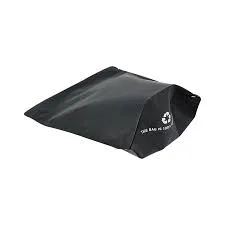- Afrikaans
- Albanian
- Amharic
- Arabic
- Armenian
- Azerbaijani
- Basque
- Belarusian
- Bengali
- Bosnian
- Bulgarian
- Catalan
- Cebuano
- chinese_simplified
- chinese_traditional
- Corsican
- Croatian
- Czech
- Danish
- Dutch
- English
- Esperanto
- Estonian
- Finnish
- French
- Frisian
- Galician
- Georgian
- German
- Greek
- Gujarati
- haitian_creole
- hausa
- hawaiian
- Hebrew
- Hindi
- Miao
- Hungarian
- Icelandic
- igbo
- Indonesian
- irish
- Italian
- Japanese
- Javanese
- Kannada
- kazakh
- Khmer
- Rwandese
- Korean
- Kurdish
- Kyrgyz
- Lao
- Latin
- Latvian
- Lithuanian
- Luxembourgish
- Macedonian
- Malgashi
- Malay
- Malayalam
- Maltese
- Maori
- Marathi
- Mongolian
- Myanmar
- Nepali
- Norwegian
- Norwegian
- Occitan
- Pashto
- Persian
- Polish
- Portuguese
- Punjabi
- Romanian
- Russian
- Samoan
- scottish-gaelic
- Serbian
- Sesotho
- Shona
- Sindhi
- Sinhala
- Slovak
- Slovenian
- Somali
- Spanish
- Sundanese
- Swahili
- Swedish
- Tagalog
- Tajik
- Tamil
- Tatar
- Telugu
- Thai
- Turkish
- Turkmen
- Ukrainian
- Urdu
- Uighur
- Uzbek
- Vietnamese
- Welsh
- Bantu
- Yiddish
- Yoruba
- Zulu
Understanding the Materials Used in Compostable Bags for Sustainable Solutions
What Are Compostable Bags Made Of?
In recent years, the conversation around the environment and sustainable practices has gained significant traction. One crucial aspect of this dialogue is the use of compostable bags, which are often touted as a greener alternative to traditional plastic bags. But what exactly are these compostable bags made of, and how do they contribute to a more sustainable future?
Understanding Compostable Bags
Compostable bags are designed to break down into non-toxic components within a specific timeframe when exposed to the right conditions, such as heat, moisture, and the presence of microorganisms. Unlike traditional plastic bags, which can take hundreds of years to decompose, compostable bags become part of the organic matter that enriches the soil. However, the materials that make up these bags play a crucial role in their effectiveness and environmental impact.
Materials Used in Compostable Bags
1. PLA (Polylactic Acid) One of the most common materials used in compostable bags is PLA, derived from renewable resources like cornstarch or sugarcane. The process involves fermenting the starch into lactic acid and then polymerizing it to create a biodegradable plastic. PLA bags are typically transparent and can be used for various applications, including grocery shopping and waste collection.
2. PBAT (Polybutylene Adipate Terephthalate) PBAT is another biodegradable polymer often blended with PLA to enhance the flexibility and durability of compostable bags. Made from petrochemical sources, PBAT is designed to break down more easily in composting conditions. This combination of PLA and PBAT creates a robust product that can withstand the rigors of everyday use while still being compostable.
3. Starch Blends Some compostable bags are made from a blend of starch-based materials and other biodegradable polymers. These bags often exhibit a lower cost and can offer varying degrees of strength and flexibility, depending on the formulation. Starch blends can be produced from various sources, including corn, potato, and tapioca, making them a versatile option for different applications.
what are compostable bags made of

4. Cellulose Derived from plant fibers, cellulose-based bags are another option in the realm of compostable materials. These bags are particularly advantageous for packaging food items as they can provide a breathable barrier while being compostable. The production of cellulose bags involves processing wood pulp, which contributes to their renewable nature.
Certification Standards
It’s essential to recognize that not all compostable bags are created equal. The term compostable is regulated and can vary significantly between regions. Certifications from organizations like the Biodegradable Products Institute (BPI) and the European Bioplastics organization help ensure that the bags meet specific criteria for compostability in industrial and home composting settings. These certifications provide consumers with peace of mind that the bags will break down as intended without leaving harmful residues.
The Impact of Compostable Bags
Using compostable bags has several environmental benefits. They help reduce the amount of plastic waste in landfills and oceans, contribute to healthier soil, and support a circular economy. When composted properly, these bags can be transformed into nutrient-rich compost, promoting plant growth and fostering a healthier ecosystem.
However, it’s crucial to use these bags appropriately to realize their full potential. Compostable bags must be disposed of in composting facilities that can maintain the necessary conditions for breakdown. Many municipalities do not accept them in regular recycling processes, which can lead to confusion and contamination in waste streams.
Conclusion
In summary, compostable bags are made from a variety of renewable materials, including PLA, PBAT, starch blends, and cellulose. They represent a step towards more sustainable practices by offering an alternative to traditional plastic bags. Understanding the materials and the conditions required for their degradation is crucial for maximizing their environmental benefits. As consumers, making informed choices about the products we use can lead to a greener, more sustainable future.













